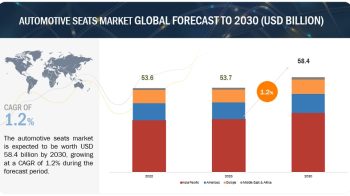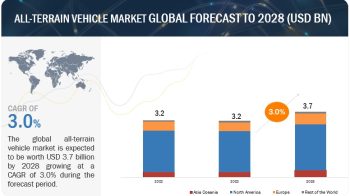
Predictive vehicle technology is a set of vehicle technologies that incorporates predictive analytics with the use of both real-time and historical data that forecast activity, behavior, and faults that might hamper vehicles if not corrected. The focus of the stakeholders of the industry has shifted from basic features such as fuel efficiency, performance, and stability of the vehicle to additional features such as smart mobility, connected car, and vehicle-to-everything (V2X) digitalization of services. This factor has attributed to the high demand for predictive vehicle technology in the automotive industry globally.
The Global Predictive Vehicle Technology Market is expected to register significant growth during the forecast period. It is estimated to grow at a CAGR of 20.1% from USD 20.8 billion in 2019 to USD 90.2 billion by 2027.
Market growth can be attributed to the advent of machine learning in the automotive industry and the growing use of real-time data for various automotive applications. The rapid incorporation of vehicle connectivity and cloud technology is enabling innovations and developments in the field of vehicle diagnostics and prognostics. Device integration features in connected vehicles are considered as the main enabler for predictive vehicle technology. For instance, devices integrated with a vehicle’s on-board diagnostics (OBD) and telematics systems are capable of transmitting real-time vehicle data. This is providing vehicle users and OEMs with a more managed system inside vehicles.
The major predictive vehicle technology market players include Bosch (Germany), Continental (Germany), Garrett Motion (Switzerland), Aptiv (UK), Aisin Seiki (Japan), ZF (Germany), NXP (The Netherlands), and Valeo (France) among others
With innovations and developments in ADAS, telematics, and diagnostics features, vehicles generate a huge amount of real-time vehicle data. This data is being used to create different combinations of cases with the use of data analytics. According to industry experts, data is the new money. That holds true for the automotive industry as well. A lot of startups are entering the market with modern data analysis capabilities. The ecosystem created around predictive vehicle technology is enabling the emergence of new business models. Predictive vehicle technologies include ADAS functions and proactive alerts that warn vehicle users. Predictive analytics involves applying statistical analysis techniques, analytical queries, and automated machine learning algorithms to data sets to create predictive models that place a numerical value or score on the likelihood of a particular event taking place.
Download PDF Brochure @ https://www.marketsandmarkets.com/pdfdownloadNew.asp?id=133781237
Machine learning has witnessed a drastic rise in its adoption in the automotive industry because of its high potential to improve various vehicle driving functions. Due to this, many major vehicle manufacturers are investing heavily in trying and using deep learning technologies to offer the high-level performance of vehicles to consumers. Moreover, in the automotive industry, safety is always the top priority. Also, stringent government mandates related to safety have forced vehicle manufacturers to introduce advanced and efficient safety functions to improve vehicle safety performance. These factors together are responsible for the growth of the predictive vehicle technology market globally.
The ADAS component segment is expected to be the fastest as well as the largest market during the forecast period. ADAS components include various sensors like radar, LiDAR, ultrasonic sensors, and cameras. These sensors are used to sense the data and send it for further processing. These sensors can be solely in isolation or in combination in various ADAS applications such as automatic emergency braking, traffic jam assist, adaptive cruise control, and forward-collision warning. Data generated from these sensors are computed to make certain patterns to predict various dangers like collision and lane change, among others. High demand for ADAS features and heavy investments by OEMs in the introduction of such features are contributing to the growth of ADAS features in the coming years.
Request FREE Sample Report@ https://www.marketsandmarkets.com/requestsampleNew.asp?id=133781237
The safety & security segment is estimated to be the largest growing market, by the application. ADAS functions such as adaptive cruise control (ACC), automatic emergency braking (AEB), forward collision warning (FCW), lane departure warning (LDW), and traffic jam assist (TJA) sense the driving environment around the vehicle, thereby alerting the driver about the danger on the road. These functions are primarily intended to assist the driver by giving predictive signals. People in developed countries are demanding more such features in their vehicles. This factor is fueling the growth of this segment in the coming years.
The Asia Pacific market is estimated to be the largest during the forecast period. The increasing sales of commercial vehicles and passenger cars in the region are expected to drive the growth of the market. China is the largest producer of automobiles in the world. Recent infrastructure developments have boosted the light-duty and electric vehicle markets in China, thereby pushing the demand for efficient fleet solutions for transport. Many European and North American OEMs are entering the sub-continental markets to cater to the demand for advanced telematics solutions in the region. In addition to this, the anticipated BS VI regulation in India is likely to push the demand for OBD in passenger and commercial vehicles. These factors are responsible for the fastest growth of Asia Pacific during the forecast period.
Speak to Analyst @ https://www.marketsandmarkets.com/speaktoanalystNew.asp?id=133781237


